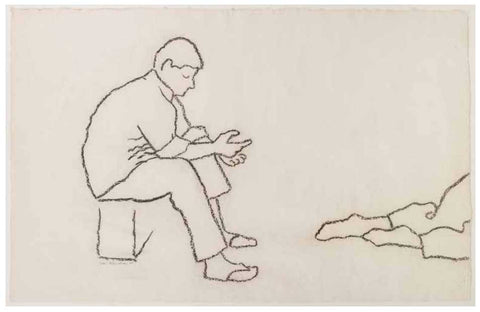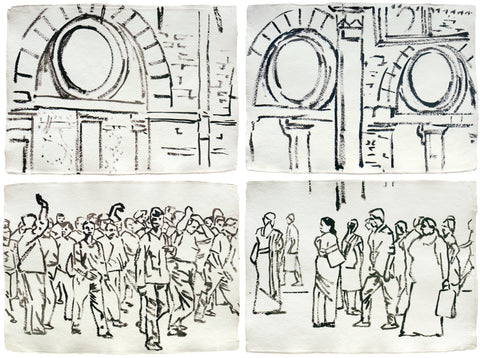Sudhir Patwardhan
Sudhir Patwardhan considers himself a painter of people. Born in Pune, Maharashtra in 1949, he graduated in Medicine from the Armed Forces Medical College, Pune in 1972. Patwardhan, a practicing radiologist, runs a clinic in a modest part of Thane in Mumbai. He held his first solo exhibition of paintings in Delhi at the famous theatre personality E. Alkazi`s art gallery Art Heritage in 1979. This exhibition was then held in Jehangir Art Gallery, Mumbai. Since then he has held more than 15 solo exhibitions in all major galleries, including Jehangir Art Gallery, Mumbai (1979,1984, 1989, 1994, 1999, 2002), Art Heritage, Delhi (1990), 1994 - Gallery Chemould (1994), Mumbai, Vadehra Art Gallery, Delhi (1999), Sakshi Gallery, Banglore and Mumbai (2001, 2002).
Sudhir Patwardhan`s works centres around one poetically monumental panorama of an urban and natural environment. The recent exhibition (2002) of his works at the Sakshi Gallery centred around one poetically monumental panorama of an urban and natural environment. The mostly charcoal drawings on paper were like instant notations from what happens among working-class people on city streets, otherwise more or less sketchy studies done from photographs.
Pathwardhan has continued to evolve his figurative style in expressionist drawings on one hand and large complex oil paintings of town and cityscapes on the other. His work has been selected for major exhibitions of contemporary Indian art in London, New York, Paris and Geneva, among other cities.
Elaborating on the thought process that goes into his work, he notes: "I do faces seen with a certain intimacy. Each of these, finished within an hour, gives me a feeling of satisfaction and accomplishment. From the innumerable persons encountered, a detail of an eye or a nose, or a tilt of the head has struck a chord. The note is then rapidly and vigorously expanded. During this process the emerging face has to fight against my impulse to engulf and dissolve it. The stereotype head and the remembered look of distrust are allies of otherness. With their help the face will attain certain autonomy. But it will not shake off my attachment.”
During the period 1986 to 1989, Sudhir Pathwardhan painted landscapes on the spot in Thane`s Pokharan area. He also held five exhibitions of these works in the area, in schools, a factory shed and even by the roadside. The aim was to share his experience with the people living and working in Pokharan. From these small works grew a large painting `Pokharan` painted in 1992.
Patwardhan`s urbanism has a stronger moral edge. Railway and bus commuters, construction labour, the by now famous solitary man in an Irani restaurant are his dramatis personae. His narrative has certain sameness, of the anonymous individual, possibly a lumpenised migrant, directly confronted by the challenges of the city. Patwardhan`s figures may be mundane but they are dignified by the effort that they invest in the everyday acts of survival.
His vast acrylic canvases may seem like a faithful depiction of the specific area, an ordinary and quite typical part of Mumbai with its uncomfortable symbiosis of decent residential buildings and poor ones, of industry and nature. These, however, exude a strangely bewitching atmosphere – both serene and disturbing, roughly literal and poetic in a delicate manner, which attain grandeur. Patwardhan conjures an aura of things beyond the concrete and the singular. Throughout he employs contradictory motifs and suggestions in order to make them transgress and unite in an evocation of the contemporary life cycle. The urban universe encompasses, stage by stage, an image of its middle-class normalcy - anonymous and vague under a muted pollution purplish-pink hue, another of a threatening stir poisoned by factory affluents and from afar presided by the lofty spectacle of rich houses whose weight and heavy rigidity turn ominous, as the next panel relaxes but with a premonition of desolation and loneliness, and the final one clarifies the mood, as though cleansed by the redeeming forces of nature and tilled earth. There is stillness and hollowness there, and yet the tiny figures or people busy themselves amid it all - on the fringes of it and within it, as an intrinsic part of it and observing-absorbing it.
His artwork on display with us is an Acrylic on paper made in 2011 and a Charcoal on paper.






